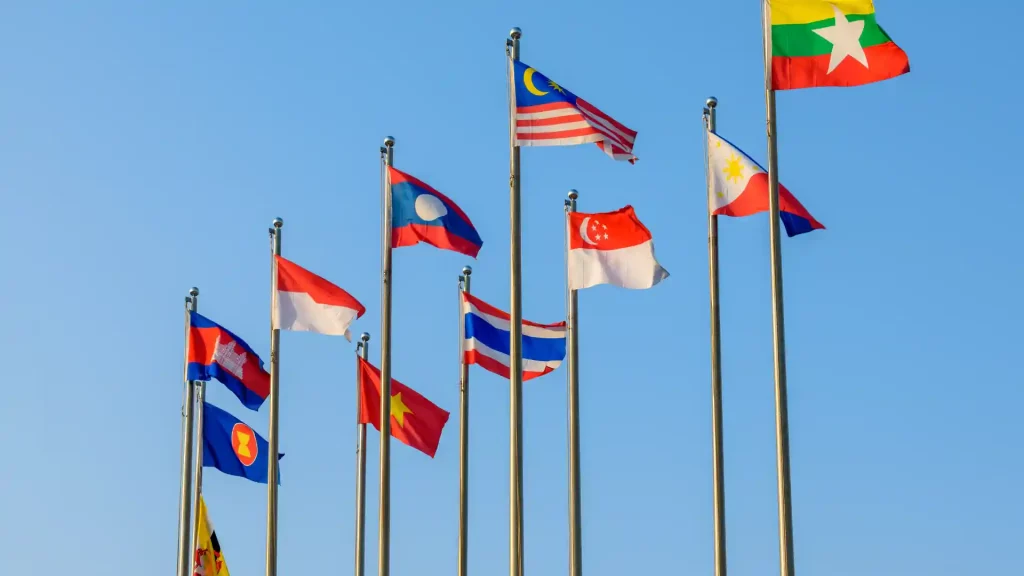The Association of Southeast Asian Nations (ASEAN), the fifth-largest economy in the world, has received an economic outlook for the year 2024 by an American credit rating agency, S&P Global Ratings. It is anticipated to grow positively on the strong base of its expanding local demand in a number of large Southeast Asian economies.
The Southeast Asian region has become a hotspot for foreign direct investment (FDI) for a few years, receiving net positive inflows annually. Global business organisations have expanded their footprint in these economies by diversifying their manufacturing base and strengthening the supply chains in the upcoming industrialised nations.
The tourism industry plays a crucial role in the ASEAN economy and several smaller nations of this region. The tourism sector is predicted to continue with its recovery throughout this year. This is possible because of the increase in international tourism that is reaching pre-pandemic levels in most Southeast Asian countries.
Hence, the ASEAN region is expected to sustain the top position for the fastest-growing regions across the globe over the next decade. It will also emerge as the key growth driver for the Asia-Pacific (APAC) region.
In 2022, the total nominal gross domestic product (GDP) of the ten ASEAN nations was valued at USD 3.6 trillion; this is more than twice as compared to 2009 when it stood at a total GDP of USD 1.6 trillion.
The outlook report states that in the near term, the region would sustain its upward growth trajectory this year as well. It will be aided by the domestic demand and an increase and improvement in quality and exports of goods and services.
In 2024, growth in merchandise exports is expected after the previous year’s downturn in exports of goods to most Asian industrial nations because of the recession fears and inflationary concerns in Western Europe and mainland China.
Medium-term Economic Outlook
The medium-term growth outlook for the region also remains positive, fueled by stable growth in private consumption in some of the largest consumer markets in Southeast Asia consisting of
Indonesia, Vietnam, Philippines, and Malaysia. The governments of the regions are investing heavily in infrastructure, which will further improve the speed of growth of local demand.
ASEAN region has emerged as an alternative for global companies to shift their manufacturing bases and minimise the risk of supply chain disruptions. This has made the region a hub for FDI inflows, looking to invest in places with growing competitive advantages.
The key factor for the growth of ASEAN is the indigenous consumer market in large APAC economies, mainly India and China. These large economies are going to be a pivotal factor in the future growth in demand for raw materials, as well as halfway and final goods from this region.
Continuous economic growth is crucial for boosting the per capita GDP of these large emerging markets of Asia. These will keep up the demand for an array of ASEAN exports.
Southeast Asian nations like Indonesia, Malaysia, Philippines, and Vietnam have also shown signs of growth in intra-ASEAN trade.
The auto manufacturing industry of this region will highly benefit from the widespread acceptance of electric vehicles instead of combustion engine vehicles. Last year, Hyundai began an assembly line of Ioniq 5 EVs at a newly constructed Hyundai Motor Group Innovation Center in Singapore.
Indonesia stands as an integral part of the Asian automotive manufacturing hub and has received significant amounts of FDI inflows from corporations to build new nickel smelters and electric vehicle battery plants.
The Board of Investment in Thailand has approved investments worth amounting to a total of Baht 40 billion from 16 new electric battery vehicle manufacturers.
International tourism and travel are recovering rapidly from the after-effects of the COVID-19 pandemic. International tourism increases as per capita household incomes in these large Asian consumer markets continue to progress, surging the number of international tourists to ASEAN tourist destinations.
This meteoric rise of ASEAN exports will be emboldened by the intra-APAC regional trade liberalisation architecture. This will include the large Regional Comprehensive Economic Partnership (RCEP), which has a combined membership of ten ASEAN nations.
It also engulfs the Comprehensive and Progressive Agreement for Trans-Pacific Partnership (CPTPP) multilateral trade agreement with several members from ASEAN.
This region will also benefit from the ASEAN Free Trade Area (AFTA) and an increasing number of free trade agreements amongst other major APAC economies.
Therefore, the ASEAN region will emerge as one of the fastest-growing regional economies in the world. Indonesia, the largest economy in this region, will become the largest leading emerging market in the next decade. It has an estimated GDP increase from USD 1.3 trillion in 2022 to USD 4.1 trillion by 2035.
Meanwhile, Vietnam and the Philippines will also emerge as two of the world’s largest emerging markets by the year 2035. Malaysia is already set to become an advanced economy of the APAC region by the sheer size of its per capita GDP projection of USD 26,000 by 2035.
